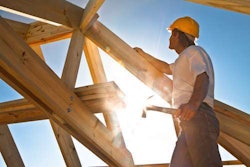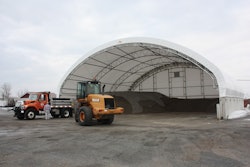The International American Society for Nondestructive Testing (ASNT) held its NDE/NDT For Highways and Bridges: Structural Materials Technology Conference in New York City August 21-24 in New York City, and Infrasense engineers played a key role in presenting recent bridge testing research and practice.
The biennial conference aims to, “promote the exchange of information between national and international researchers, practitioners and infrastructure owners on the application of Nondestructive Evaluation (NDE) and Nondestructive Testing (NDT) technologies for the condition assessment of highway bridge and pavement infrastructure.”
This year’s conference was attended by nearly 200 people including members of universities, research institutions, transportation agencies, and consulting firms. This marks the 6th time Infrasense has attended and contributed with technical papers, presentations and an exhibit. This year Infrasense staff are primary authors on two conference papers, and a secondary author on a third conference paper.
In the area of bridge deck assessment, Adam Carmichael of Infrasense presented the results of an independent evaluation of network-level bridge deck condition assessments in Minnesota. MnDOT has contracted out NDT scanning on 100 bridge decks throughout Districts 1, 3, 6, and metro areas. Most of the work was carried out with ground penetrating radar (GPR), and was supplemented with the use of infrared thermography (IR) on a select number of decks. The purpose of this work was to determine the degree of unsound concrete in each deck so that appropriate maintenance and rehabilitation measures could be taken to maximize the benefit to users for a given budget. As part of this process, MnDOT commissioned an independent study by EVS, Inc. to review cost, accuracy, and usefulness of these NDT methods with respect to their estimation of the actual extent of bridge deck repair. The repair work on 12 of the bridge decks was evaluated. This evaluation found the GPR and IR results to be within 3.5%-4% of actual repair quantities on average.
The latest research developments into the detection of deck deterioration were presented by Nicole Martino of Northeastern University, with contributions from Dr. Maser of Infrasense, who serves as a consultant to Northeastern in the field of nondestructive testing in concrete bridge decks. The goal of the research has been to establish a clearer connection between the data generated by the GPR equipment and the different aspects and stages of bridge deck deterioration. To achieve this goal, a full battery of testing was performed on in-service structures, controlled slabs specifically cast for corrosion testing, and slabs extracted from in-service structures during deck replacement projects. The research has already yielded some significant results. Preliminary results have revealed that the spatial correlation between GPR and HCP is 90%, indicating the ability of GPR to detect corrosion activity in bridge decks. Additionally, the spatial correlation between GPR and IE testing for delimitations is 79%.
Practical applications of NDE technology for bridge load rating were presented by Dr. Maser of Infrasense. Load rating is carried out on all bridge structures to ensure that they have the capacity to support the expected vehicular loads, or to appropriately restrict the vehicular loading on older and/or distressed structures by posting load limits. For many of these older structures, including culverts, concrete and stone arches, and precast girder bridges, design or as-built plans are no longer available to serve as a reference for the load rating analysis calculations. In these situations, NDE methods are often useful to fill in such missing data as element thickness, depth of overburden (culverts and arches), rebar depth and spacing, and estimated concrete strength. Over the past few years, MassDOT has used these techniques to support load ratings on a large number of structures. In his presentation, Dr. Maser discussed the types of structures that have been investigated, the NDE methods used, the data that was obtained and the methods of analysis, and the resulting information generated for the load rating process.













